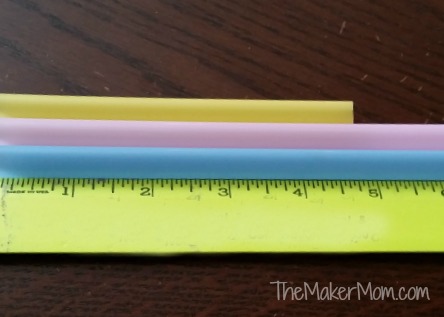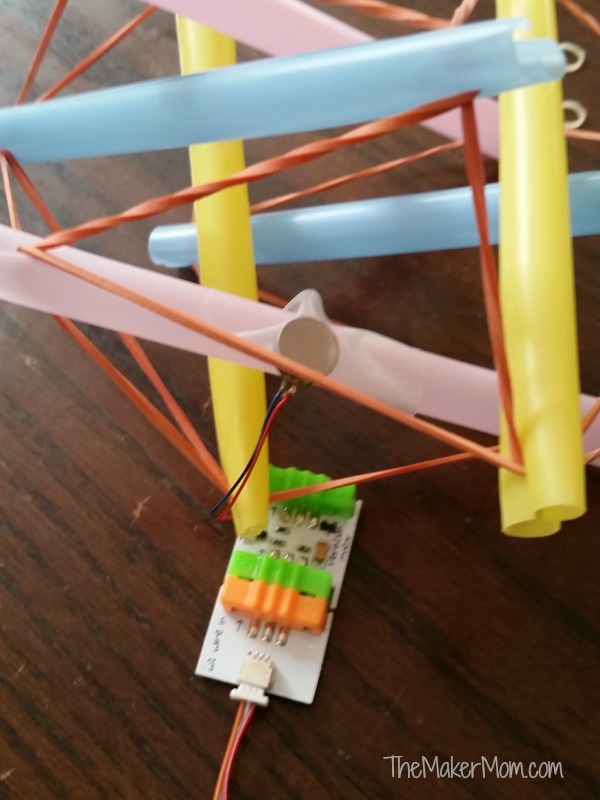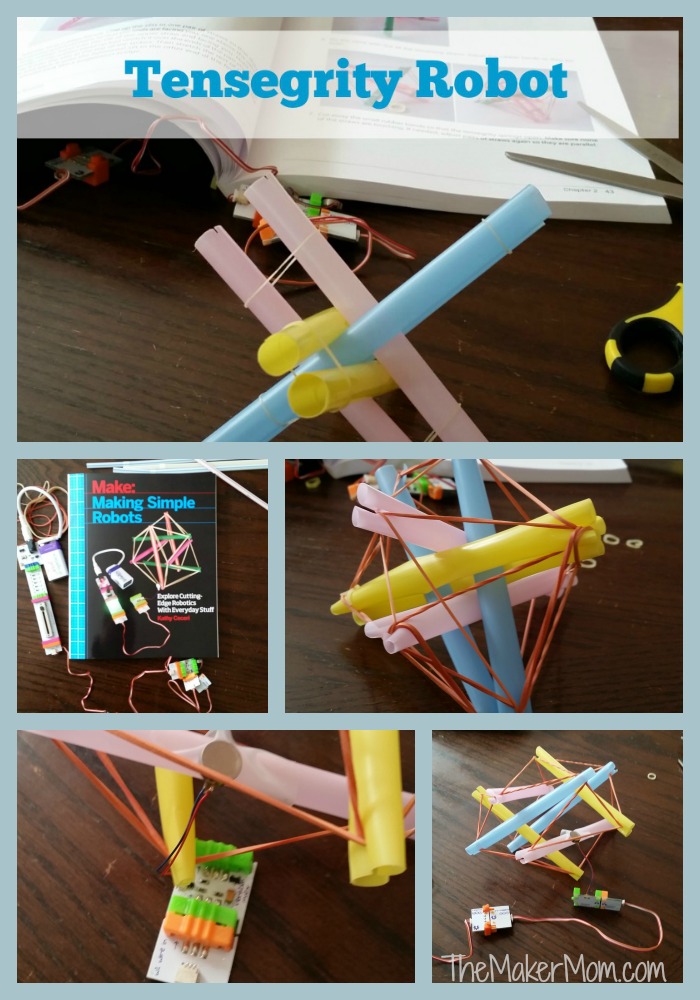If you have kids under age 10 and you’ve asked me about making robots, chances are I’ve referenced Kathy Ceceri’s book, Robotics. The book is full of basic, highly accessible projects, many of which are surprisingly low-tech, but help children (and their parents) understand robot basics. Now Kathy has taken things up a notch. She partnered with MAKE for a follow-up book, Making Simple Robots. I received a review copy of the book; please note that this post contains affiliate links.
This book is a step forward from her previous one. The text is denser, the projects more complicated. That said, they are not too complex for an eager, mechanically-minded older tween or teen.
The “everyday items” referenced in the title are a bit more sophisticated that the household items of her first book. For example, littleBits factor into a couple of the projects. (Longtime readers know I’m a littleBits fan; I recommend them if you’re striving to raise Maker-minded kids.) The book contains plenty of information on retail outlets as well as urls for online tutorials related to the technology required for a given project.
The book is divided into several chapters, each with an informative overview, DIY projects and other information you need to get started.
Here’s a breakdown of chapters (with a sample project):
- Robots Made from Interesting Materials (Inflatable Robot)
- Robots that Get Around (Tensegrity Robot–I made this one; see photos below)
- Unevolved Robots, which my mind keeps seeing as “unloved robots”(Gliding Vibrabots)
- Robot Friends and Helpers (ChatBot)
- Fun, Artsy Robots (FiberBot, an E-textile robot)
The projects are well-organized with overviews and explanations followed by detailed lists of materials, parameters (time, cost, etc.), key skills required, and, thankfully, photos that accompany step-by-step tutorials.
My biggest complaint about the book’s organization is that Kathy’s closing note, “What I Learned Writing this Book,” should would be better placed in the introduction. If you’re a fairly new or tentative maker, read her thoughts first. They’ll provide a lot of reassurance.
Speaking of which, it took me three tries to make the tensegrity robot. First I read an early step as “cut the straws up to five inches,” so I made mine only three and it was tough to use my chubby fingers to manipulate the tiny model. That’s why the straws pictured in the at the top of this post aren’t part of the finished model. On my second try I cut the straw pieces to five inches, but because I’m bad at making mental models in 3D, I got kind of spazzy with the rubber bands despite trying to follow the photos in the book. Finally, though, I produced a working model.
I do have one pro-tip to add to Kathy’s instructions, though. If you have a child in orthodontia, use their small rubber bands in this project. (This is why I don’t throw things away. I knew those tiny bands would come in handy some day!)
Here it is in action buzzing around my table. (Click the arrow to watch the snippet.):
If you and your kids are aspiring makers, Kathy’s first book is a great place to start. Making Simple Robots is a great follow-up. In fact, I’m going to encourage the robot-loving Young Maker Teen to work his way through it this summer.
And if you like these books, pick up a copy of Maker Dad (even if you’re a mom, uncle or aunt). It has a lot of fun projects in it that you won’t find in a typical arts-n-crafts book.






